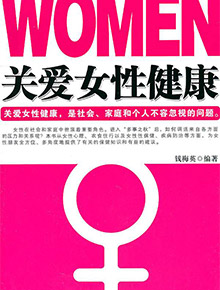《国际妇产科杂志(中国版)》翻译大赛暨特约译者招募活动圆满落幕,活动自3月份开展以来,陆续收到了近百篇参赛作品,最终由评委会专家组评选出5名最佳译者及5名优秀译者,获奖译文各有所长,现选登两篇以飨读者。
译文1:
临床上,子宫内膜异位症与不孕相关。药物和手术治疗内异症对女性的生育机率影响不同,不管其生育是通过自然受孕还是辅助生育技术(assisted reproductive technology,ART)实现。内异症的药物治疗均有避孕效果。目前研究(尽管大多数研究没有设对照组)提示对于任何期别的内异症,手术治疗都可提高自然妊娠机率。子宫内膜异位囊肿非手术治疗的条件为:囊肿为双侧,过去手术治疗史,及卵巢储备力的改变。因为担心对手术治疗能影响卵巢功能(实际上,手术前卵巢功能就已经下降了),所以更多的人赞同ART前,不要行手术治疗这一原则,但下列情况例外:疼痛,输卵管积水以及囊肿巨大。药物治疗(3-6个月的GnRHa)能提高ART的结局。为了留出时间让患者试行自然受孕,在年龄、卵巢储备力、男方及输卵管状况等因素允许时,应考虑立即手术。其他病例,ART前不先行手术治疗,最好先用促性腺激素释放激素的激动剂(gonadotropin-releasing hormone analogue,GnRHa)。然而,这种早期手术的策略,似乎与直觉相抵触,因为存在着这样的观念,即先应用损害少的非手术治疗,最后再手术治疗(仅当初始治疗失败时)。因此在制定内异症相关的不孕的整体治疗措施时,前提条件是要衡量手术治疗、药物治疗和ART的各自优势。
我们先简述子宫内膜异位症和不孕的病理生理学,然后评价手术治疗和药物治疗的各自优势。药物治疗指的是各种能治疗内异症的制剂(所有的药物都是阻止卵巢功能,但是通过不同的机制)。目前,这些药物主要包括促性腺激素释放激素的激动剂(GnRHa),口服避孕药以及其他激素药物(如,单纯孕激素)。但并不包括各种辅助生育技术(ART),如卵巢刺激,通常用于增强生殖力,有时也用于治疗子宫内膜异位症。当手术治疗和药物治疗都无效,或者同时有输卵管疾病或存在男方问题时,有必要继续使用ART治疗。ART包括体外受精(in-vitro fertilization,IVF)和胞浆内单精子注射,这是为治疗由男性因素导致不孕的衍生技术。进而我们也将强调内异症的药物治疗和手术治疗对ART结局有何种影响。最后,有了内异症相关的不孕的整体方法这一基础,我们将简述一个实用的治疗规范,以指导临床应用。
总之,内异症女性的在位子宫内膜的变化改变了子宫内膜细胞的特性[4,14]。对手术时从盆腔收集到的子宫内膜碎片进行体外培养,发现与对照组相比,来自内异症患者的细胞种植和增生得更快[73]。因此,子宫内膜异位症本质上并不是仅仅由于经血逆流,而脱落在盆腔的子宫内膜细胞的独特性质,包括它们种植和增生的倾向性[73],可能也起到重要作用。
图2概括了在治疗与内异症相关的不孕时需考虑的基本因素。该策略代表了结合手术和ART各自优点的整体方法的精髓,而且它与欧洲人类生殖和胚胎学会[105]以及美国生殖医学学会[106]的指南相一致。当不孕症患者在检查阶段时,如为内异症病程早期应当予以手术,因为手术的最主要的优点就是提高自然受孕的机率。根据Vercellion及同事的研究[77],我们知道不管疾病位于哪种期别,手术都能提高自然受孕的可能性。因此当衡量手术的优势时,也应该考虑时间的可利用性、卵巢储备里及自然受孕的能力(输卵管及精子状况),而不是疾病的期别。实际上,手术后应该留出充分的时间(至少12个月),以使自然受孕的机率达到最大化。相反,如在ART即将进行前行手术治疗,基本上没有收益。
(华中科技大学同济医学院附属协和医院 王绍海)
译文2:
目前为止,异常子宫出血(abnormal uterine bleeding,AUB)还没有公认统一的医学术语命名系统,因为其可能的病因太过多种多样,而且在某个病患的个案中往往多种病因同时存在。显而易见,要改变这种诊断术语混乱的糟糕现状,就需要形成一致公认的命名系统。另外还需要建立一套不同层面的有关AUB病因的分类系统,这更有利于临床医生、研究者包括患者之间的交流,更有利于临床诊疗和科研。为了建立上述分类系统,我们正在进行一系列的设计研究。本文会阐述我们的设计研究过程,并提出AUB的PALM-COEIN分类系统。PALM-COEIN的各字母分别代表息肉、子宫腺肌病病、子宫平滑肌瘤、子宫内膜恶性病变和子宫内膜增殖症、凝血功能障碍、排卵障碍、子宫内膜其他病变、医源性疾病和未分类型病变。该分类系统已被国际妇产科联盟(International Federation of Gynecology and Obstetrics,FIGO)的执行委员会批准作为FIGO分类系统。
育龄期女性的异常子宫出血可以是多种疾病或病理改变的一种临床表现。到目前为止,该类疾病缺乏公认的分类方法。这也阻碍了疾病相关基础研究和临床调研的进展。同时,在临床用药或手术治疗方面难以形成一致的、规范的、便于临床操作的诊疗规程。以往的某些分期和分类系统至少在一些方面还是有用的,它可用于临床症状相似患者之间的比较研究,也可指导临床医生对此类患者的诊断和治疗。目前的共识是建立一套临床可行的AUB分类系统。在完善患者的全身系统检查后,全球的临床医生都能通过该分类系统,对AUB患者进行准确一致而清晰的分类。此外,AUB症状描述方面也没有标准化术语,这是阻碍临床医生和患者沟通的另一方面原因。有关这方面的规范制定结果另有文献发表[1,6,7],目前提出的分类系统也只是我们最初的想法,尚有待完善[11]。
目前提出的AUB分类系统需要患者完善相关检查。我们从全球六大洲范围内请来临床医生参与AUB分类系统的制定,其中部分原因就是让大家评估相关检查的临床可行性。显而易见,依照目前的医疗现状,所有的患者都通过MRI检查来评估子宫器质性病变是不可行的。因此,并不是所有的慢性AUB患者在分类时必须进行影像学检查。当然,这也不是说临床医师不能或是不应该进行MRI检查。在确有需要且资源可获得的情况下,MRI检查也是可行的。MRI结果能够帮助我们判断是否存在子宫腺肌病,有助于现有AUB系统的分类。
(浙江大学医学院附属妇产科医院 徐萍)
附件1 获奖名单
最佳译者:
唐妍(中山市人民医院)
施君(上海交通大学医学院附属仁济医院)
徐萍(浙江大学医学院附属妇产科医院)
王绍海(华中科技大学同济医学院附属协和医院)
祝洪澜(北京大学人民医院)
优秀译者:
单伟伟(复旦大学附属妇产科医院)
陈燕萍(福建省立医院)
翁旸(山东大学齐鲁医院)
杜静(广东省中山市博爱医院)
翁丹卉(华中科技大学同济医学院附属同济医院)
附件2 英文原文
原文1:Endometriosis and infertility: pathophysiology and management
Endometriosis and infertility are associated clinically. Medical and surgical treatments for endometriosis have different effects on a woman’s chances of conception, either spontaneously or via assisted reproductive technologies (ART). Medical treatments for endometriosis are contraceptive. Data, mostly uncontrolled, indicate that surgery at any stage of endometriosis enhances the chances of natural conception. Criteria for non-removal of endometriomas are: bilateral cysts, history of past surgery, and altered ovarian reserve. Fears that surgery can alter ovarian function that is already compromised sparked a rule of no surgery before ART. Exceptions to this guidance are pain, hydrosalpinges, and very large endometriomas. Medical treatment—eg, 3–6 months of gonadotropin-releasing hormone analogues—improves the outcome of ART. When age, ovarian reserve, and male and tubal status permit, surgery should be considered immediately so that time is dedicated to attempts to conceive naturally. In other cases, the preference is for administration of gonadotropin-releasing hormone analogues before ART, and no surgery beforehand. The strategy of early surgery, however, seems counterintuitive because of beliefs that milder non-surgical options should be off ered fi rst and surgery last (only if initial treatment attempts fail). Weighing up the relative advantages of surgery, medical treatment and ART are the foundations for a global approach to infertility associated with endometriosis.
After touching on the pathophysiological background of endometriosis and infertility, we will assess the respective values of surgery and medical treatments. By medical treatments we mean the various agents proposed for treatment of endometriosis (all block ovarian function but by diff erent means). Today, drugs mainly amount to agonists of gonadotropin-releasing hormone, oral contraceptives, and other hormone treatments (ie, progestins only). These, however, do not encompass the various assisted reproductive technologies (ART), such as ovarian stimulation, which is used for augmentation of fertility and is sometimes undertaken for endometriosis. When surgery and medical treatments fail, or natural conception is impossible because of coexisting tubal disease or altered male characteristics, reversion to ART is necessary. Such techniques include in-vitro fertilisation (IVF) and its variant for male factor infertility, intracytoplasmic sperm injection. Hence, we will also highlight how medical and surgical treatments of endometriosis aff ect the outcome of ART. Finally, having laid the foundation for a global approach to infertility associated with endometriosis, we will sketch a practical algorithm for guidance of clinical management.
In summary, changes recorded in the eutopic endometrium in women with endometriosis alter the characteristics of endometrial cells.4,14 Endometrial debris collected in the pelvic cavity at the time of surgery implants and proliferates in vitro quicker when it originates from patients with endometriosis compared with unaff ected women.73 Endometriosis, therefore, does not result solely from retrograde bleeding per se. Rather, the very properties of endometrial cells that are shed in the pelvic cavity, including their tendency to implant and proliferate,73 probably have a pivotal role as well. This novel idea refutes the longlasting objection to Sampson’s theory, that although most women have retrograde menstruation, only a few develop endometriosis.
Figure 2 outlines primary variables to be taken into account during treatment of infertility associated with endometriosis. The proposed strategy represents the essence of a global approach that combines respective advantages of surgery and ART, and it accords with guidelines of the European Society of Human Reproduction and Embryology105 and American Society for Reproductive Medicine.106 Surgery should be off ered early in the course of endometriosis, when infertility is at the workup stage, because the primary benefi t of surgery is to enhance the chances of natural conception. From work of Vercellini and colleagues,77 we know that surgery augments the probability of natural conception irrespective of disease stage. Therefore, when weighing up the advantages of surgery, considerations should include availability of time, ovarian reserve, and capacity to conceive naturally (tubal and sperm status) rather than disease stage. Indeed, suffi cient time (at least 12 months) needs to be allocated after surgery to maximise the chances of a natural pregnancy. Conversely, surgery undertaken just before ART offers, in principle, little benefit.
原文2:FIGO classification system (PALM-COEIN) for causes of abnormal uterine bleeding in nongravid women of reproductive age
There is general inconsistency in the nomenclature used to describe abnormal uterine bleeding (AUB), in addition to a plethora of potential causes—several of which may coexist in a given individual. It seems clear that the development of consistent and universally accepted nomenclature is a step toward rectifying this unsatisfactory circumstance. Another requirement is the development of a classification system, on several levels, for the causes of AUB, which can be used by clinicians, investigators, and even patients to facilitate communication, clinical care, and research. This manuscript describes an ongoing process designed to achieve these goals, and presents for consideration the PALM-COEIN (polyp; adenomyosis; leiomyoma; malignancy and hyperplasia; coagulopathy; ovulatory dysfunction; endometrial; iatrogenic; and not yet classified) classification system for AUB, which has been approved by the International Federation of Gynecology and Obstetrics (FIGO) Executive Board as a FIGO classification system.
Abnormal uterine bleeding in women of reproductive age is a manifestation of any of a number of disorders or pathologic entities. To date, the absence of a universally accepted method for classifying such patients has impeded basic science and clinical investigation, as well as the practical, rational, and consistent application of medical and surgical therapy. In the past, at least some staging and classification systems have proven to be useful as a way to compare research on clinically similar populations, and for the guidance of the clinician in the investigation and treatment of affected patients. The current agreement process was designed to create a practical system that could be used by clinicians in most countries worldwide to classify patients with AUB readily and consistently, based on the results of a systematic evaluation. Another recognized impediment to communication between and among clinicians and patients was the absence of standardized nomenclature for the description of symptoms of AUB. The results of the present agreement process are published elsewhere [1,6,7] and the proposed classification system presented in preliminary form [11].
The participation of clinicians from 6 continents was, in part, designed to provide input into the practicality of performing the investigations described for classifying patients according to the proposed system. Clearly, at this time, the characterization of structural lesions of the uterus using MRI is not feasible and, consequently, use of the modality is not included as a mandatory tool for classification of patients with chronic AUB. This does not mean that clinicians cannot or should not use MRI if it is deemed necessary and is available, with the results of MRI assessments used to determine the presence or absence of adenomyosis when classifying a patient according to the present system.




